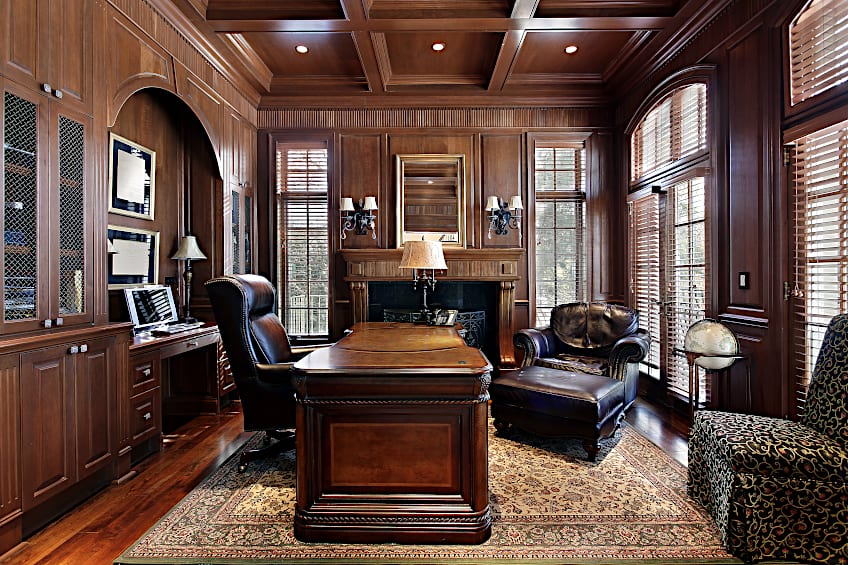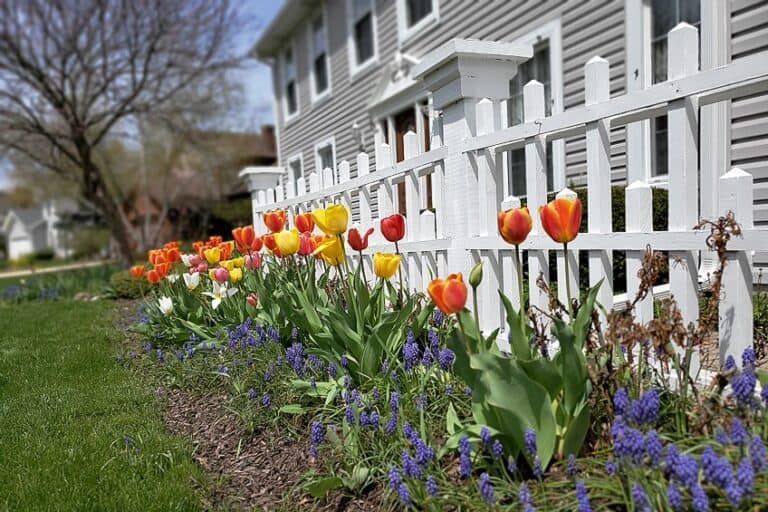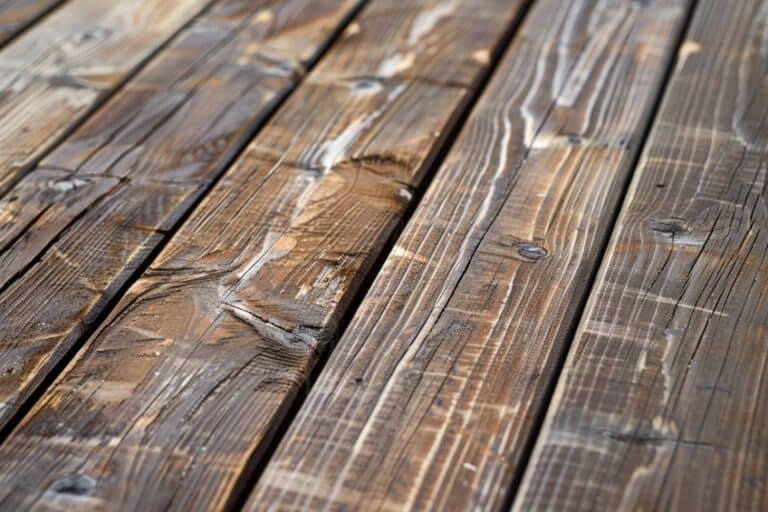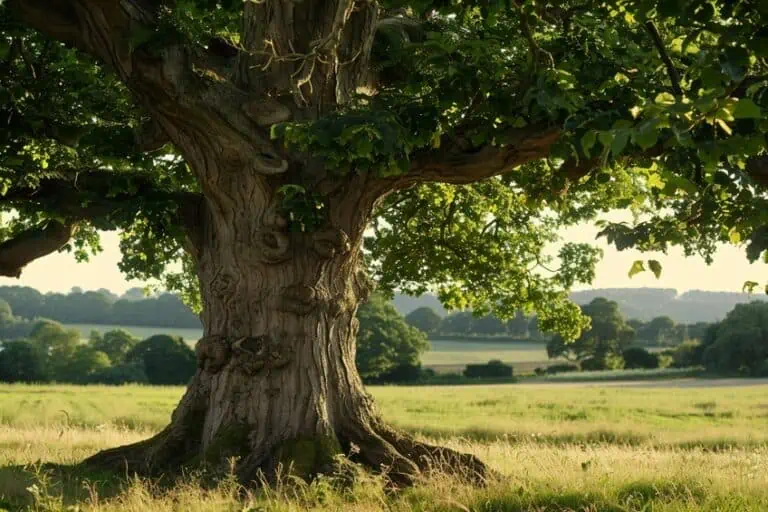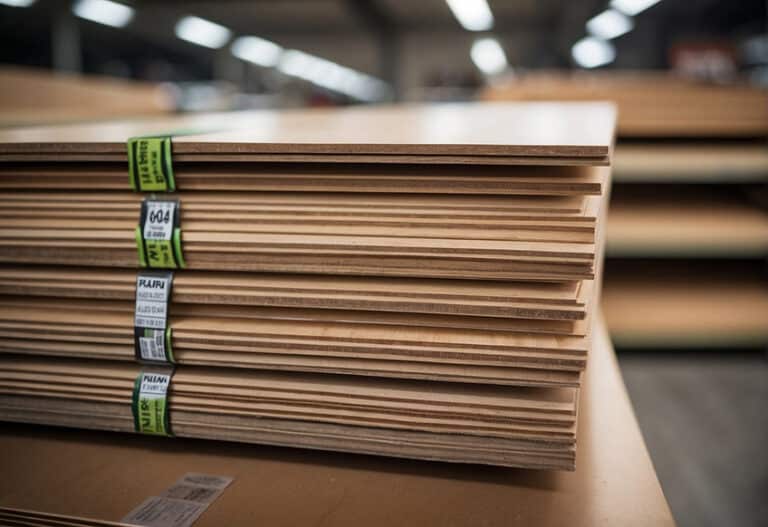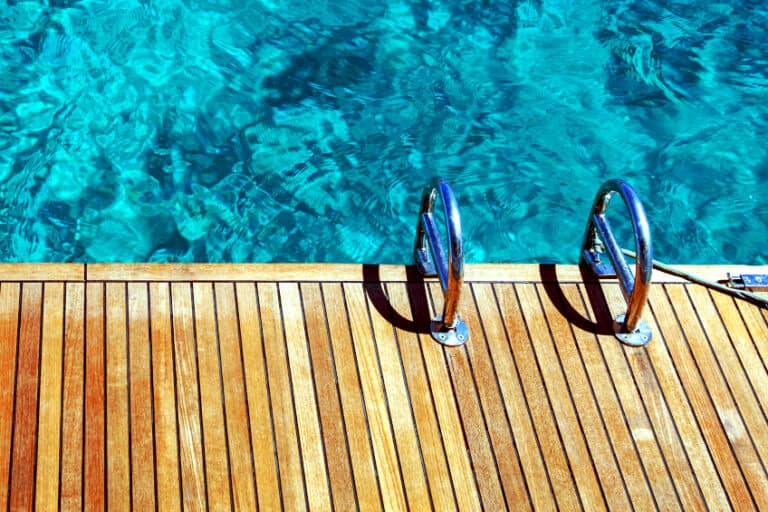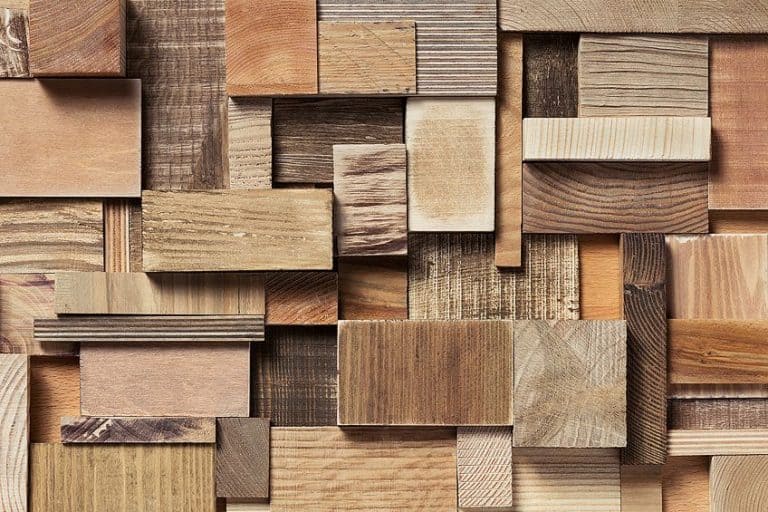Most Expensive Woods – Top Bank-Breaking Timbers
What is the most expensive wood? We have used wood for millions of years as a practical and somewhat sustainable means to create structures, keep warm, cook food, create weapons, and even cross the open ocean. As time went on, we began to distinguish between certain wood species, their characteristics, how accessible they are, what they can be used for, and where they could be found. This information led to increased demand for particularly rare wood species that often had unique characteristics. These trees have become some of the most expensive commodities in the world. Increased demand coupled with deforestation, means that some of these wood species are now increasingly rare, with the result that some of the most expensive types sell for nearly three times what you would pay for your garden variety lumber. This being said, let’s have a look at the most expensive woods, where they’re found, and what they can be used for.
What Is the Most Expensive Wood Species in the World?
What are the most expensive wood species in the world? There are various wood species all over the world that are so rare, and therefore sought after, that they fetch a price so far above average that most of us could never afford them for everyday applications. To illustrate just how rare and expensive they can be, we’ve prepared a descending list of the most expensive wood species starting with the most expensive, African black wood, and working our way down. Enjoy!
| Name of Wood | Botanical Name | Native Location | Average Price |
| African black wood | Dalbergia melanoxylon | East Africa | $100,00 per board foot |
| Dalbergia | Dalbergia sissoo | South Africa | $100,00 per board foot |
| Pink ivory | Berchemia zeyheri | Zimbabwe, Mozambique, Northern Botswana, South Africa. | $80,00 per board foot |
| Sandalwood | Santalum album | South Africa, Zimbabwe, East Africa, Northwest Africa | $70,00 per board foot |
| Agarwood | Aquilaria malaccensis | Northeast India, Bangladesh, Bhutan, Southeast Asia | $65,00 per board foot |
| Bocote | Cordia gerascanthus | Mexico, Central America, West Indies | $40,00 per board fit |
| Holly | Llex | North America, Japan | $40,00 per board foot |
| Bubinga | Guibourtia | Cameroon, Gabon, Ivory Coast | $25,00 per board foot |
| Purple heart | Tradescantia pallida | Central America/African Rainforest | $15,00 per board foot |
| Lignum vitae | Guaiacum officinale | Central America and West Indies | $14,00 per board foot |
African Black Wood
African blackwood is by far the most expensive wood species on the face of the planet. Typically, when something is extraordinarily expensive, it means that either it’s pretty rare or it has properties that are greatly sought after. In the case of African blackwood, both of these things are true. Not only is African blackwood only found in a specific part of Africa, but it is extremely robust too.
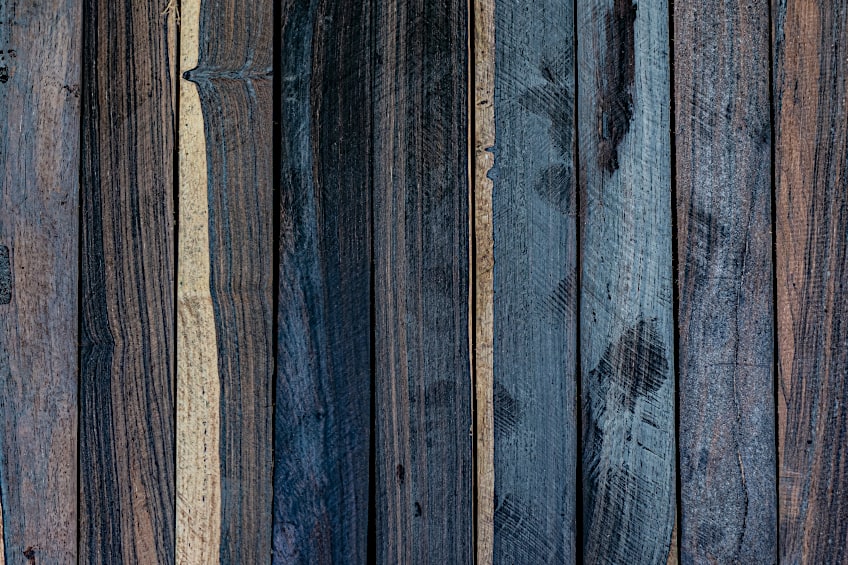
African blackwood is extremely dense, with a record-setting force of 4050 on the Janka hardness scale, making it the hardest wood on the planet by a country mile. This level of hardness makes it the ideal material for certain workpieces, but it also makes the wood considerably difficult to work with due to the amount of effort needed to carve, tap, or shape it.
It’s not only the density and durability of this wood that makes it so sought after. African blackwood is marvelous to look at, and if you know how to finish it, you’ll be able to produce stunning workpieces that are sure to last a lifetime! African blackwood is typically used to make various musical instruments and moderately sized furnishings both in its country of origin and abroad.
African blackwood can be characterized as having a super dark brown heartwood that resembles a shiny black marble in appearance. Its sapwood is a bright yellow color that tends to look like amber when exposed to sunlight. This wood is tough due to the harsh environments it’s been cultivated in, but with many other scarce resources, it has been over-harvested and is considered to be nearly endangered.
Dalbergia wood
Dalbergia wood might not be as sought after as African blackwood but it’s still just as valuable, particularly when one considers its cost per board foot. This wood is found in two locations around the world, namely in Central America and parts of the African continent. Unlike the other woods, we’ve mentioned previously dalbergia wood can be harvested from both a tree and shrub.
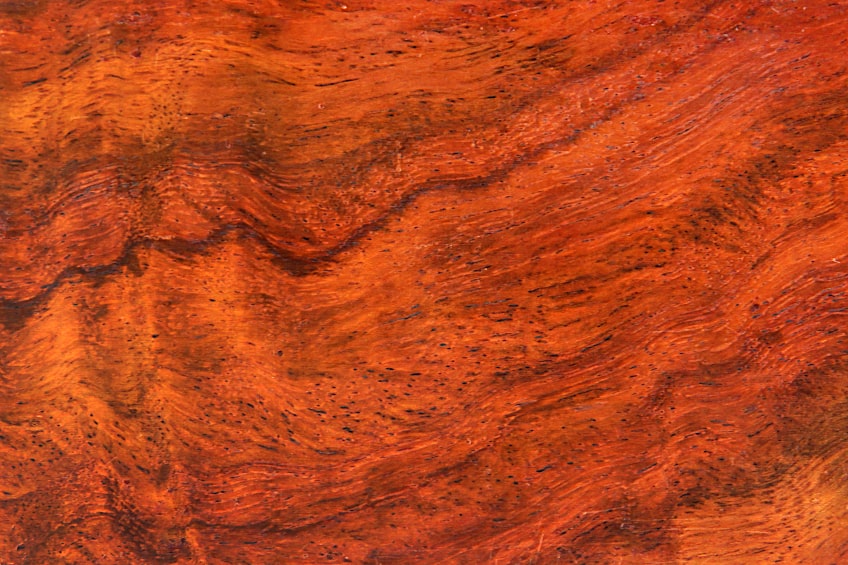
This is because dalbergia is used to describe an entire genus of wood, one which you might know by its common name, rosewood. Rosewood is one of the many variations of this wood species, and most of them share the same characteristics as rosewood. This wood species tends to be scarce, dense, and challenging to work with and makes for rather attractive workpieces.
As is the case with many expensive wood species, dalbergia is used to create many exclusive workpieces for those able to afford them all over the world. What exactly is rosewood used to make? Well, you could use many species of dalbergia to make things like furniture, instruments, ornate or decorate items, jewelry, and even wood veneer.
Dalbergia wood can be challenging to work with, but it creates workpieces that are capable of lasting a lifetime if they’re maintained correctly. This wood type isn’t sold at your local lumber spot, so if you’re looking to get your hands on some it’s best to either place your order in-store or online and wait for it to arrive, which can take a while depending on where you live.
Pink Ivory Wood
If you’re in the market for a unique wood that’s sure to set your next workpiece apart from the crowd, pink ivory wood could be just what you’re looking for. Not only is this wood species beautiful, but it is exceedingly rare since it can only be found in South Africa. It has a unique light rose color, which can change depending on the age of the wood.
This wood can also be found in faded orange and light red hues depending on the conditions the tree has been exposed to and/or how the wood has been stored. A particularly rare color that this wood can be found in is a light purple, which makes for absolutely stunning crafts and furnishings. Pink ivory tends to have a “glow” about it thanks to the way the wood fibers interact with ambient light.
Usually, when a wood is this good aesthetically, it tends to lack in the durability department. Pink ivory on the other hand has an impressive durability rating, which means it can be used in a number of applications where one would normally use more readily available hardwoods that don’t have the same aesthetic appeal.
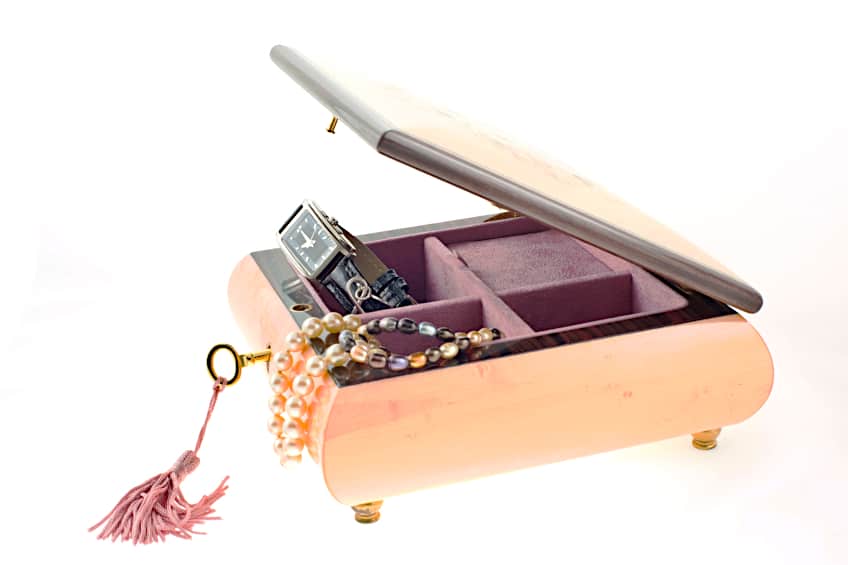
Pink ivory wood is also very dense and doesn’t have a lot of pores. This ensures that it is not affected by insects, moisture, rot, and any other external force that could compromise its integrity. This combination of aesthetic appeal and toughness has led to its being used in applications like jewelry, the creation of musical instruments, cutlery handles, and even high-end veneer!
Sandalwood
Sandalwood is a name you might have heard in ads for perfume, high-end furnishings, or on a home improvement show, without knowing it’s the second most expensive wood on the planet. This wood is used in the construction of high-end workpieces all over the world thanks to its relatively easy-to-work nature, and the aesthetic impact it offers.
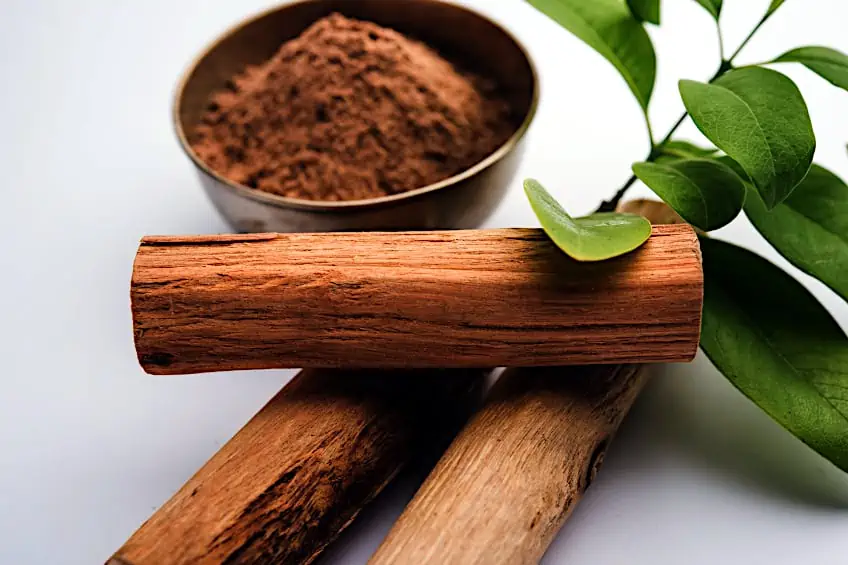
It isn’t just used in the creation of wood crafts though. Sandalwood is uniquely scented, and this scent has been extracted, amplified, and sampled to create things like perfumes, scented alcohol (whiskey mainly), and even cosmetic products like lotions and creams. The scent of sandalwood is instantly recognizable and sticks quite well, which makes the wood even more coveted.
Unlike some of the other wood species we have covered so far, sandalwood is not renowned for its hardness or durability. Sandalwood only has a Janka hardness rating of 1798, which makes it decently stiff and workable, but it’s not capable of withstanding loads of punishment. It isn’t very dense either, which means its resistance to moisture, insects, and general decay is negligible.
As you can see then, even though sandalwood can be used to be woodcraft, its high demand is due to what can be synthesized from its essence rather than its construction applications. This being said, sandalwood is rarely used in mass production these days as research has shown that it’s well on its way to becoming an extinct wood species.
Agarwood
Another wood that isn’t renowned for its construction of woodcraft applications is agarwood. This wood species is native to Northeast India and can be found inside massive 130-foot-tall trees which grow closely packed together. The wood produced by these trees is pretty normal until it undergoes a little-known process, which turns its heartwood into the agarwood we use today.
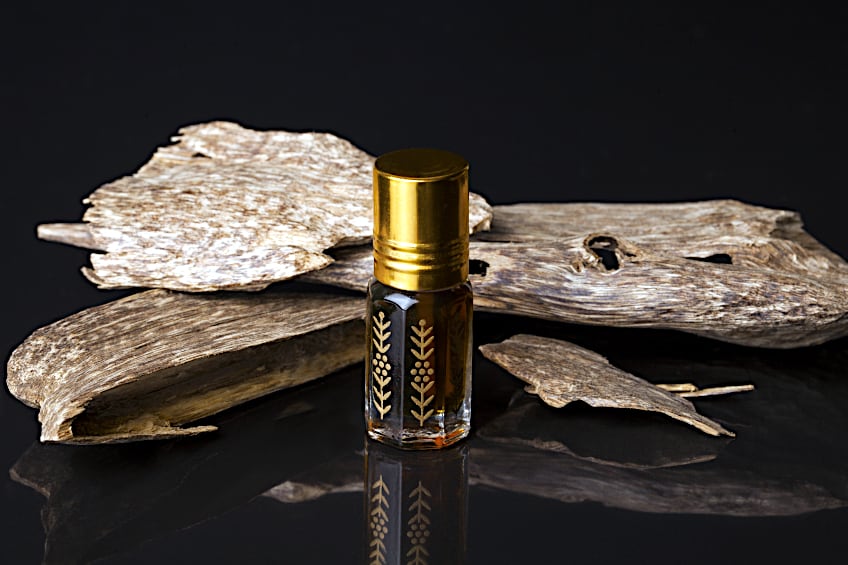
What is this process you ask? Well, these trees have a habit of becoming infected with a specific type of fungi, and once the fungi have had a chance to set up shop, it alters the composition of the wood fibers that make up the tree’s heartwood. How does it change the heartwood? It changes the fibers inside the heartwood into a sweet-smelling resin known as aloes.
The smell and softness of this resin become a transitive property among the fibers of the heartwood, resulting in a pleasant-smelling timer that is extremely sought after all over the world, but especially so Southern Asian countries. The process of infection and harvest takes time though, which means that there isn’t nearly enough to go around.
As we know, scarcity and high demand usually mean that things fetch a high price, and agarwood is no exception. Much like sandalwood, agar is used in many consumer-end cosmetics and personal care items thanks to its pleasant odor. Also, like sandalwood, agar has been harvested unsustainably and has therefore become a threatened genus in the region.
Bocote Wood
If you’ve got some cash burning a hole in your pocket and you’re in the market for something truly unique then we think that bocote wood might be what you’re looking for. Found in South America, this wood is known for its unique texture, and intertwining brown and black color tone which can change from yellow to brown depending on the example you’re looking at.
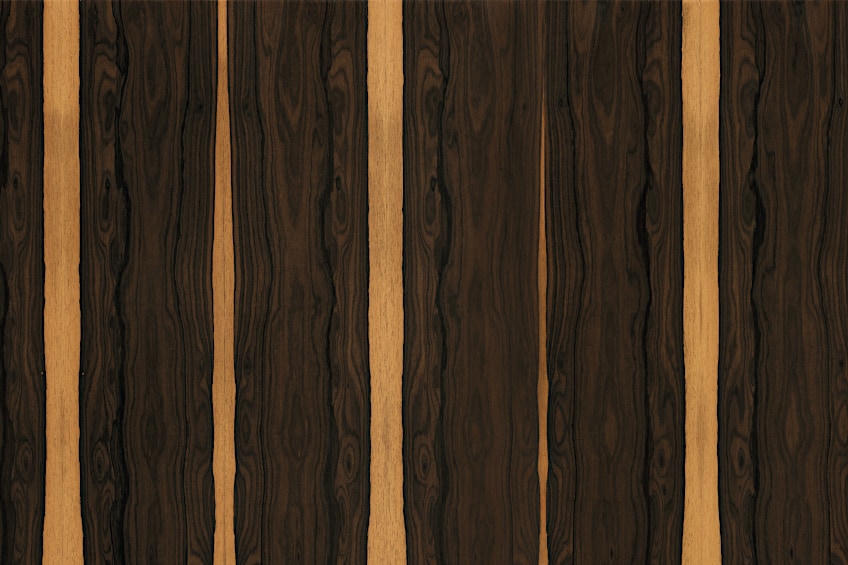
While some of the other woods we have covered are sought after due to their unique color, tensile strength, or odor, bocote is known for its incredibly unique grain and color patterns which make any woodcraft fashioned from it stand out immediately. One might assume that this means the wood is particularly knotty (which isn’t great to work with) but in reality, the wood is relatively free of knots.
Like many other wood species found in this part of the world, bocote tends to be rich in oils and resin which it uses to both sustain itself and keep away predatory species like insects, as well as keep moisture from forming rot and general decay. Bocote is also fairly dense, which makes it heavy and a decent wood crafting medium for more experienced crafters.
What is bocote wood used for then? Well, considering that it’s pretty difficult to come by and it only grows in one part of the world, it should come as no surprise that it’s used in the creation of high-end products. You can find bocote wood being fashioned into handles for chef’s knives, as the butt stock for hunting rifles, in the creation of high-end instruments, and even in the creation of high-end furnishings.
Holly Tree Wood
Some wood species are expensive because they’re hard to find or only grow in a specific region. Others are expensive because they have properties that are unique, but American holly is unique because it tends to be difficult to process and maintain, which means that those who have workpieces made of American holly are part of an exclusive few.
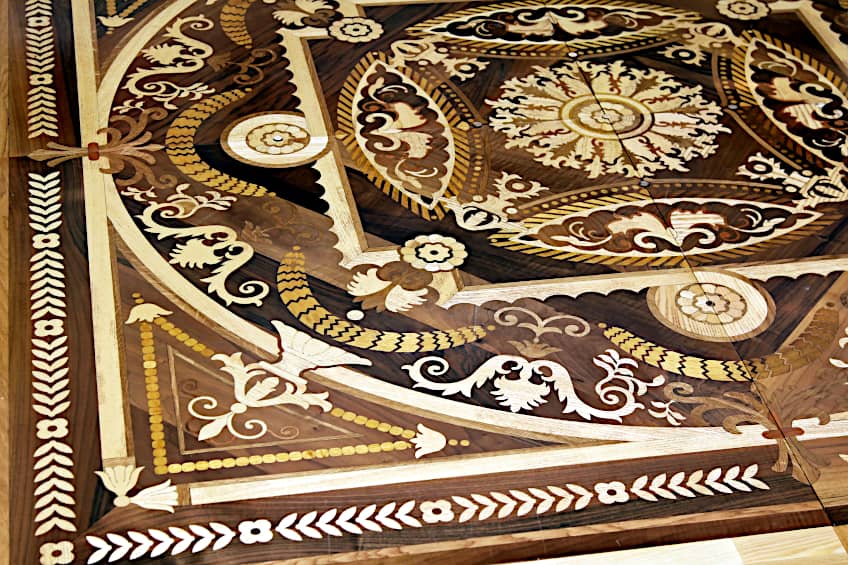
Holly doesn’t grow from huge trees either. In fact, holly trees have quite thin branches and trunks that tend to grow at a moderate pace, and they can be challenging to find even in their native regions. In terms of appearance holly is a pale white, so much so that it barely has a visible grain pattern, and it tends to be fairly knotty, which can make it challenging to work with.
Holly needs to be dried immediately after cutting or you run the risk of your wood being infected with fungi. Once the wood is dried it needs to be kept straight, to the lumber will lose value, and considering that holly trees don’t produce much usable wood due to knots and the size of the tree, it is best to protect your investment.
It seems then, that the price of holly can be attributed to its scarcity and delicacy. This wood is not resistant to insect infestation, mold, or fungi, which means it needs to be constantly cared for. Holly is typically used for niche applications like the creation of piano keys, inlays for larger furnishings, and even small boutique furniture like little chairs and tea tables.
Bubinga Wood
Bubinga wood might not be one of the most expensive wood types, but it can still fetch a pretty penny in the US thanks to its rarity. This is because bubinga is only found near the equator on the African continent, and it packs an entirely unique grain pattern and color. Bubinga wood is used to make a wide variety of things all over the world, with all of them being exceedingly expensive.
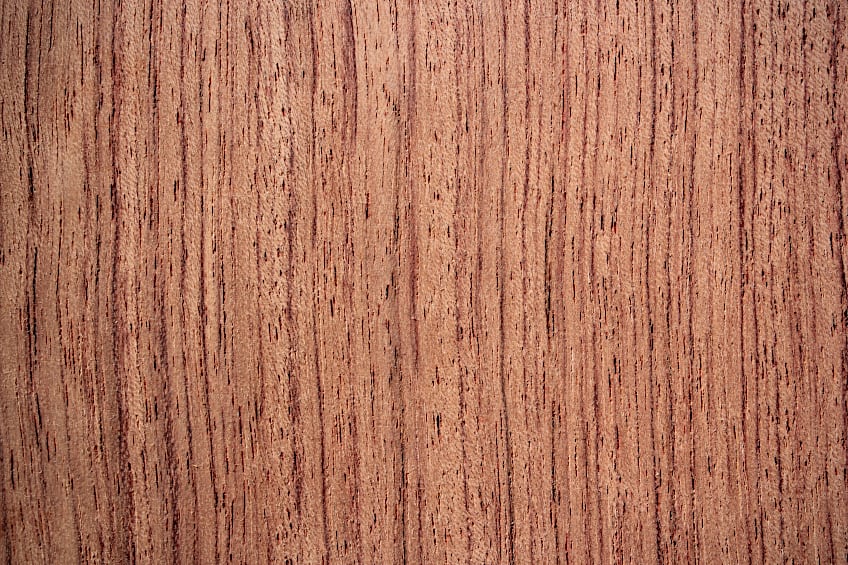
The texture of this wood species is unique because the grain tends to change direction suddenly, which can make it challenging to work with in some instances but is well worth the effort considering the impressive furnishing and wood crafts that can be created from it. Bubinga wood is dense, heavy, and durable, which is why it is commonly used to make extravagant furnishings like couches and dining room tables.
Bubinga wood varies in its resistance to rot and decay depending on the exact species you find yourself with, but there are examples of the genus that have been known to be resistant to invasive species like termites and fungi. This wood can be a bit challenging to use with adhesives though, as it has a naturally high concentration of oils and silica.
What is bubinga wood actually used to make you ask? Well, it can be used to create things like inlays, cabinets, large tables, massive entryway doors, high-end veneer, musical instruments, and wall runners, and it can even be found in the trim of high-end automobiles like walnut wood. As you can imagine then, these characteristics have made bubinga wood one of the most expensive wood types around.
Purple Heart Wood
You might also know this wood by the name Amaranth. Purple heart wood can be found all over Central America, and thanks to the considerably harsh conditions under which it is grown, it tends to be extremely durable, dense and has the ability to fend off things like insects, rot, and other hostile animal species who’d like to make their home in the tree’s heartwood.
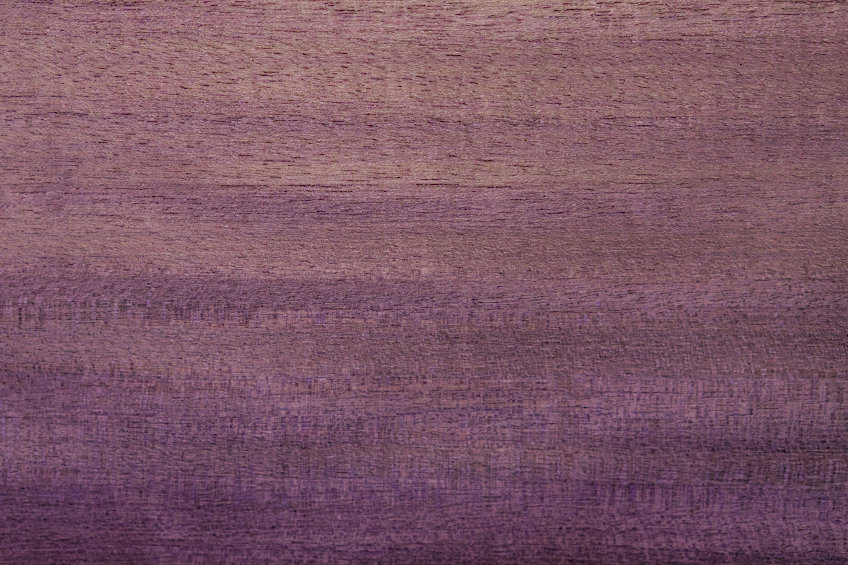
Purple heart isn’t very porous which is why it’s often used in the construction of decks and internal flooring for seafaring vessels both in South America and other parts of the world. Despite its wide use, purple heart wood is pretty rare, and can therefore fetch quite a bit of money, especially in countries where it needs to be imported for use.
Its scarcity isn’t the only reason that purple heart is so expensive. This wood is entirely unique in its appearance, starting out brown while the wood is still attached to the trunk of the tree and changing to a light purple color once cut down and exposed to direct sunlight. Despite its stunning color and grain, this wood can be difficult to work with due to its resinous nature.
The grain of purple heart tends to be straight, but depending on the exact genus and the region in which it is grown and harvested, it can be irregular or wavy. Even so, thanks to its inherently robust nature, purple heart wood is used for many applications including furniture, flooring, load bearing applications, and even boat building to name a few.
Lignum Vitae
Lignum vitae (also known as ironwood) might not be the most expensive hardwood, but it is arguably the hardest working wood on the face of the planet. This wood has been used for pretty much every application under the sun, and this is all due to its self-lubricating properties, which are entirely unique to this wood species, hence its extensive use in engineering applications.
While it might not be the most expensive hardwood, it might be one of the best. This wood was used in the world’s first nuclear-powered submarine, where it was used to create self-lubricating bearings for parts of the submarine. There aren’t many wood species that can say they’ve been part of such a huge historical and scientific landmark!
Where is Lignum vitae found? Well, it’s usually found and harvested in parts of the Bahamas, where it’s used to make tool handles, bushings, self-lubricating bearings, pulleys, and even medicines! Its engineering applications come as no surprise considering its high oil content and its extreme durability thanks to its density and interlocking grain.
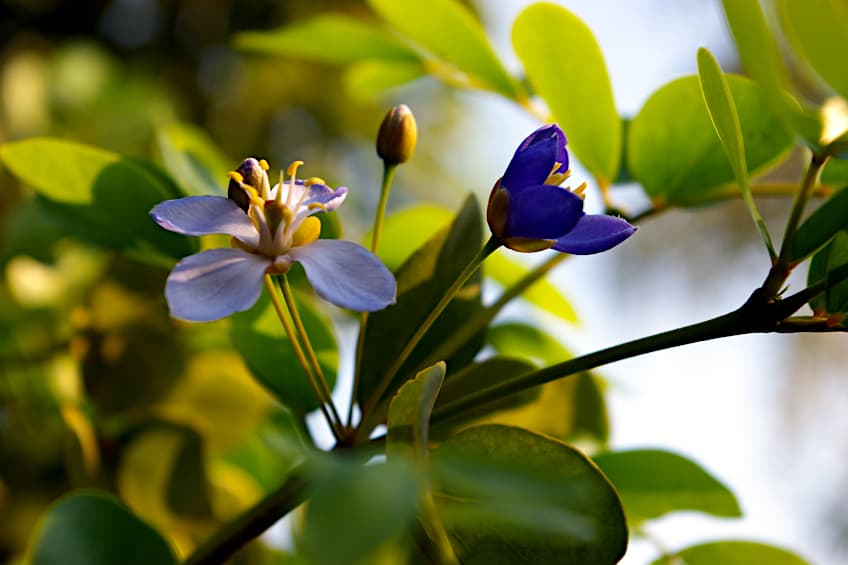
This wood can be challenging to work with due to its grain structure and oil content, which has a tendency to dull blades and cause the wood to jump when in contact with joint cutters. However, workpieces that are formed from this wood aren’t only durable, but they can be polished to a near reflective finish thanks to the wood’s natural oil content. Unfortunately, due to its extensive use, lignum vitae is considered critically endangered by a number of bodies around the world.
Now that you have an idea of what some of the most expensive woods in the world are, where they are found, what they are used for, and what they cost, it’s time for you to get out there and put your newfound knowledge to the test. Remember that there are a number of factors that contribute to a wood’s price and that it’s always best to shop around before hitting that buy button!
Frequently Asked Questions
What Is the Most Expensive Wood in the World?
What is the most expensive wood in the world? There are many highly-priced wood species, but the one that tends to top the charts the most is African blackwood. Native to Southern Africa, African blackwood is dense, hard-wearing, stunning to look at, and can cost well over $100,00 per board foot.
What Is the Rarest Type of Wood?
What is the rarest type of wood? This is a difficult question to answer but statistically, agarwood is by far the rarest and therefore most expensive wood species on the face of the planet, fetching well over $65,00 per board foot of lumber.
What Are the Most Expensive Woods for Furniture?
What are the most expensive woods for furniture? When it comes to high-end furnishings, only a handful of solid wood species are up to the task. By far, the most used of these are sandalwood, African blackwood, pink ivory wood, agarwood, and lignum vitae.

I have been into woodworking since 2005 and woodturning since 2011. Because of my love for wood and woodworking, I started woodhappen.com to teach other enthusiasts about how to finish and seal wood, the best woodworking tools, the different types of wood, and everything else related to woodworking! Read more about me here.

